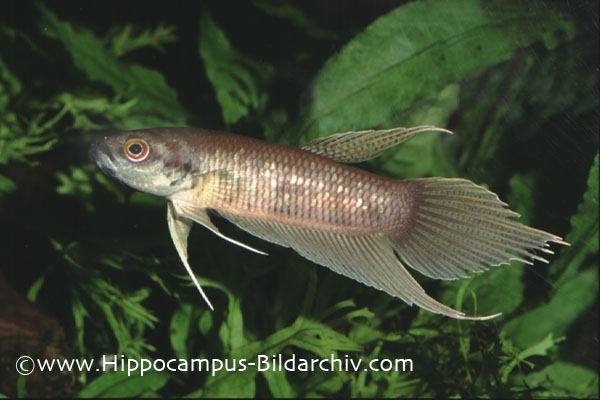| Citation |
|
Description |
Geographic Range [top]
Range Description: For further documentation see International Betta Congress
Countries occurrence:
Native:
Indonesia (Sumatera)
Additional data:
Range Map: Click here to open the map viewer and explore range.
Habitat and Ecology [top]
Citation: Kottelat, M. 1996. Betta chloropharynx. The IUCN Red List of Threatened Species 1996: e.T2773A9479808. http://dx.doi.org/10.2305/IUCN.UK.1996.RLTS.T2773A9479808.en. Downloaded on 23 January 2019.
Disclaimer: To make use of this information, please check the .
Feedback: If you see any errors or have any questions or suggestions on what is shown on this page, please provide us with feedback so that we can correct or extend the information provided
Distribution
This species was described from Bangka, a small island just off the east coast of Sumatra, Indonesia. A population from close to the city of Palembang on Sumatra itself, initially considered conspecific, was described as B. pardalotos in 2009.
Habitat
The type specimens were collected from a clear forest pool but this was only present as a result of artificial habitat modification; in general it’s an inhabitant of peat swamps and associated blackwater streams.
These ancient biotopes are usually found in areas of rainforest, the dense canopy of branches above meaning very little light penetrates the water surface and riparian vegetation also tending to grow thickly.
The water is typically stained darkly with humic acids and other chemicals released by decaying organic material. The dissolved mineral content is generally negligible and the pH can be as low as 3.0 or 4.0.
The substrate is usually covered by fallen leaves, branches and submerged tree roots and at certain times of year the fish may be forced to survive within the moist leaf litter for several weeks as permanent water is not always available. |

